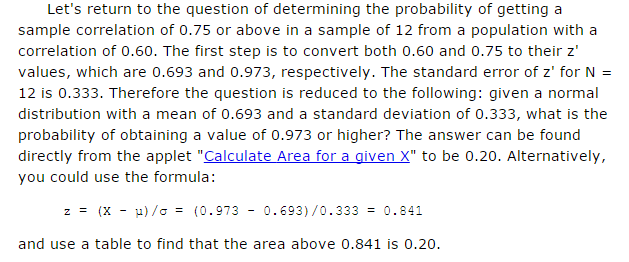Subtracting the mean of a random variable and dividing the result by its standard deviation is called standardizing (or sometimes normalizing, though that's a somewhat overloaded term).
The result is sometimes called a z-score.
The same terms may sometimes be used even when estimates of $\mu$ and $\sigma$ are used instead.
Calling the result $Z$ (given as $z$ in the text you show) is simply a convenient (and conventional) label for the standardized variable. On the other hand, since the section is also talking about Fisher's transformation of the correlation (which was also called $z$), the author here has added the $'$ mark to the Fisher's transformed correlation to distinguish it from the first $z$. Calling the second thing $z'$ rather than $z$ is not conventional - they're both typically called $z$ but this usually isn't an issue because it's not usually the case that we need to talk about both at the same time.
When it does happen that both are present in close proximity - as here - it's necessary to in some way distinguish them (so its clear which we're talking about). [It's like if you're in a group of people talking, one of whom is called John Anderson and another person - John Baker - later joins in. Now you need to be clear about which John you mean when you say "John". You'll either start calling one by some other name (maybe one is often called "Johnathan" while the other isn't, or maybe you start calling them by their surnames) or add something to distinguish them, maybe calling them John A and John B. The $'$ on the second $z$ is for exactly this purpose, just to make clear which thing you're referring to - just as if you'd continued to call the first guy "John" but now called the second John "John B". This doesn't imply you'll call the second one anything but John the next time you meet him. Or to make the analogy more precisely match the situation, in the linked page we seem to have have been waiting around for John A to show up and so started calling the other John who was present "John B" right from the start, since everyone knows John A and will want to call him "John".]

